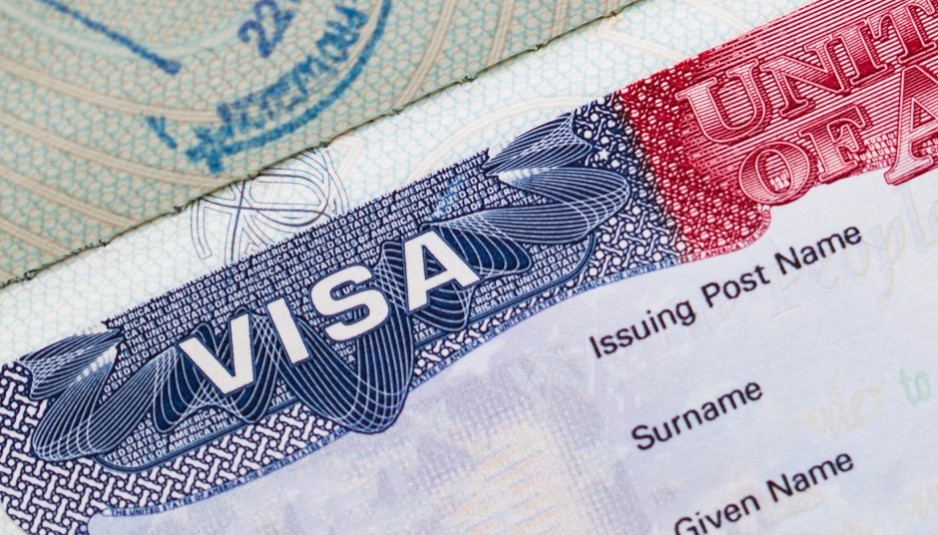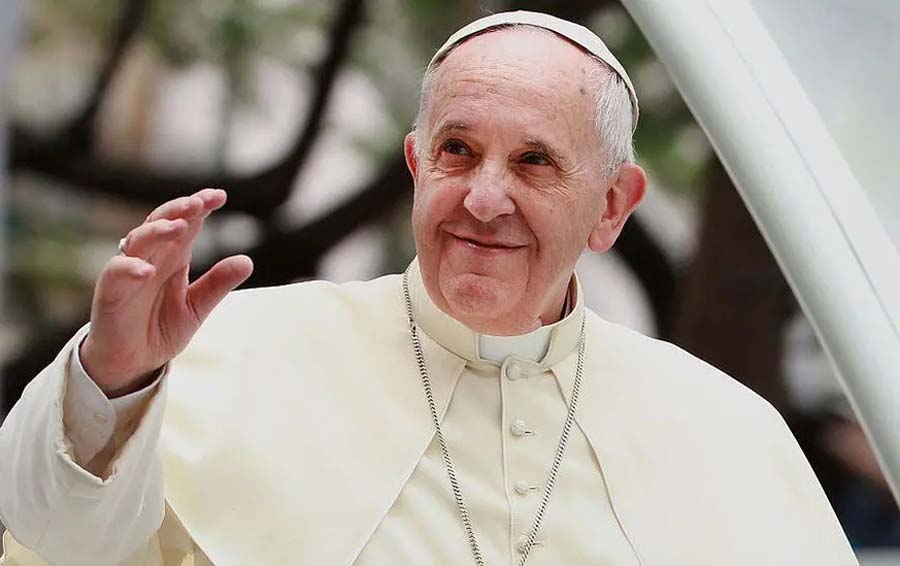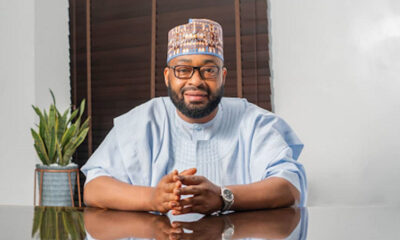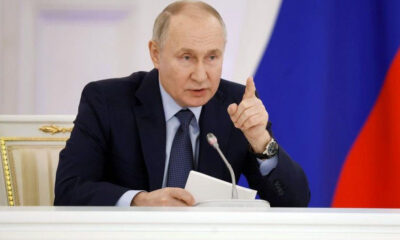International
Ukraine ‘disappointed’ in NATO, as Biden visits U.S. troops in Poland

President Biden traveled to this southeastern Polish city Friday to visit U.S. troops deployed along NATO’s eastern fringe as a bulwark against Russian incursion, and to laud Poland’s humanitarian role in welcoming more than 2 million Ukrainian refugees.
Biden, who met with members of the 82nd Airborne Division and Polish President Andrzej Duda, said he regretted that he could not cross the border into Ukraine, barely 60 miles away, to see the crisis firsthand.
But inside Ukraine, where Russia’s brutal onslaught continued, a senior aide to President Volodymyr Zelensky said officials were “very disappointed” in the outcome of the series of summits Wednesday among NATO and European Union leaders in Brussels that brought Biden to Europe.
“We expected more bravery. We expected some bold decisions,” Andriy Yermak, Zelensky’s chief of staff, told the Washington-based Atlantic Council via live video Friday.
U.S. and Ukrainian officials believe that the Russian operation has already failed in some respects, given strong Ukrainian resistance and heavy Russian losses, and Russia signaled Friday its aims might be narrowing. But Yermak’s remarks served as a reminder that Ukraine remains outmanned, outgunned and facing more destruction each day. The Pentagon said Friday Russia has begun to mobilize military reinforcements to possibly send into Ukraine.
READ ALSO:
- Lady who shared petrol as party gift in Lagos jailed 27 months
- Court orders forfeiture of ex-Petroleum Minister, Diezani’s land to FG
- Nigeria Vs Ghana FIFA World Cup playoff ends in 0-0
- Terrorism: US Donates $2m Worth Of Nuclear Detectors To Police
By issuing a general statement of ongoing military support, while continuing to deny Ukraine’s requests to send it Soviet-era jet fighters, impose a no-fly zone against Russian aircraft over Ukraine, and speed the flow of more heavy weaponry, Yermak said, NATO “is just trying to ensure that it is not provoking Russia to a military conflict” with the West, calling the alliance’s inaction “appeasement.”
“We need very concrete things. But we still have to repeatedly remind you,” he said.
Yermak said Ukraine needs NATO to “close our sky” to Russian air power and provide “intelligence in real time,” as well as more antiaircraft and antitank weaponry — some of which is now in short supply in the West. He also pleaded for more long-range artillery, rocket launchers and small weapons.
“Without it,” Yermak said, “our war will not be able to stand.”
Far from an anticipated rush toward full occupation of a country with a far weaker military, Russia appeared Friday to have at least partially lost control of the southern Ukrainian city of Kherson, on the Black Sea, according to defense officials, the first of a handful of midsized cities it has struggled to occupy in the five weeks since the invasion began.
Ukrainian forces, bolstered by armed civilians, have pushed back Russian advances in other parts of the country, as well. The Pentagon said Friday that Ukraine has made “incremental” progress against Russia outside the northern city of Chernihiv, and other offensives were underway in the western suburbs in Kyiv, the capital. A senior U.S. defense official, speaking on condition of anonymity under ground rules set by the Pentagon, said that Russian troops, stalled outside Kyiv for weeks, have begun to establish defensive positions instead of prioritizing an advance.
While Russia’s objective in the invasion initially appeared to be seizing Kyiv, the Kremlin is now emphasizing its intention to control the Donbas region in the east, where Ukrainian troops have been fighting against two breakaway areas since 2014. Moscow has recognized the region as two separate “republics.”
“The combat potential of the Armed Forces of Ukraine has been considerably reduced, which … makes it possible to focus our core efforts on achieving the main goal, the liberation of Donbas,” Sergey Rudskoy, head of the Russian General Staff’s Main Operational Directorate, said in a speech Friday.
The renewed focus on Donbas could be a face-saving measure as the Russians fail to achieve their larger aims, such as the capture of Kyiv and decapitation of Ukraine’s government. Russians have made modest gains in the east, and their focus now may be to enlarge territory controlled by separatists and declare victory. It could also be designed as a ruse to allow beleaguered Russian troops to rest.
READ ALSO:
- 18 Arrested As Suspected Cultists Murder Kingpin In Ogun
- Stop using my illness to scam people – Mr Ibu
- BREAKING: APC to release Unity List today
- Terrorists flee as troops invade ISWAP camp in Borno
It is not clear whether Russian troops will be pulled from elsewhere to reinforce Donbas, the U.S. defense official said, but there is evidence that they have shifted how they fight in other places.
“It appears the Russians are for the moment not pursuing a ground offensive toward Kyiv,” the official said. “They are digging in. They are establishing defensive positions.”
Rudskoy also issued the first Russian casualty assessment since the beginning of March, saying that 1,351 service members have died, and 3,825 have been injured. NATO estimated Wednesday that 7,000-15,000 Russian troops have been killed in four weeks of fighting in Ukraine, according to an alliance senior military official.
The official, who spoke on the condition of anonymity under NATO ground rules, said the estimate was based on several factors, including information from Ukrainian officials, what the Russian side has released, and open sources. By comparison, Russia lost about 15,000 troops over a decade of war in Afghanistan after it invaded in late 1979.
Among the most recent Russian casualties, according to a Western official and a Ukrainian journalist, was Col. Yuri Medvedev, commanding officer of the 37th Motor Rifle Brigade, who was attacked and injured by troops under his command after they suffered heavy losses in the fighting outside Kyiv. The troops ran a tank into Medvedev, injuring both his legs, after their unit lost almost half its men, according to a Facebook post by journalist Roman Tsymbaliuk.
Although Tsymbaliuk said the colonel had been hospitalized, a senior Western official said he believed Medvedev had been killed.
Russia’s bombardment of Ukraine’s population centers and other targets continued, with the senior defense official reporting Moscow is flying 300 sorties over Ukraine per day — an increase over a week ago. On Friday, Ukraine’s air force also claimed that Russian missiles had hit a command center in Vinnytsia, in west-central Ukraine, “significantly” damaging some buildings.
The southern port city of Mariupol remained under heavy Russian attack and cut off from food, water and humanitarian assistance. Matilda Bogner, head of the United Nations Human Rights Monitoring Mission in Ukraine, said at a news conference Friday that her agency had received “increasing information” and satellite images of mass graves in Mariupol.
One mass grave identified appears to hold some 200 bodies, she said, although it remained unclear how many of the deceased were civilian casualties of the war.
Bogner said the U.N. human rights office had also documented 22 cases of Ukrainian officials disappearing or being forcibly detained in Russian-controlled territories, 13 of whom have since been released. A number of journalists in areas under Russian occupation in the southeast have disappeared or been killed.
In his remarks Friday, Yermak expressed gratitude to the United States and other Western countries, as has Zelensky in the numerous video addresses he has given to Western legislatures and other audiences. But, as has Zelensky, Yermak emphasized that Ukraine is the West’s front line against further Russian aggression that NATO must stop for its own security.
Biden, in Poland, touted an additional $1 billion he had previously announced to aid the millions of Ukrainians who have fled the violence into neighboring countries and beyond, as well as the millions displaced and suffering inside the country. The United States has also committed to provide more than $2 billion in military equipment under Biden, including Stinger man-portable anti-air defense missiles, and Javelin antitank weapons.
As Russia’s offensive was getting underway in late February, the State Department appealed to countries to which it had sold those weapons in the past to share those they could spare with Ukraine. The United States, it promised, would quickly issue the necessary waivers to transfer them to another country, and would backfill their arsenals with weapons sent from its own stockpiles.
But as the need in Ukraine has grown, some of those weapons, in particular Stingers, have been in increasingly short supply. Production lines for the missiles, which first entered service in 1981, ceased some time ago and “we are exploring options to more quickly replenish U.S. inventories, and backfill depleted stocks of allies and partners,” Defense Department spokeswoman Jessica R. Maxwell said.
“It will take time to revive the industrial base … to enable production to resume,” Maxwell said in an email. Among the options to fast-track production, she said, were adding additional workers to the production line and developing alternatives for obsolete components.
Mike Nachshen, senior director for international communications of Raytheon Missiles and Defense, which produces Stingers, said that they “recognize the urgent need to bolster inventories” and are working with government and industry “to accelerate production timelines so that we can deliver additional units of this critical combat capability as soon as possible.”
The administration is considering invoking the Defense Production Act, which gives the executive emergency authority to control domestic industries and speed up production of certain critical items. Both Biden and President Donald Trump invoked the act to deal with the covid-19 pandemic.
The U.S. promise to resupply U.S.-manufactured defense supplies sent from other nations to Ukraine is of particular importance to countries along NATO’s eastern flank, concerned about defending their own front lines in a possible confrontation with Russia.
In particular, Ukraine has asked for supplements to the Russian-made S-300 air defense system already in its arsenal, whose missiles fly higher and farther than the short-range Stingers. Slovakia and Bulgaria — which, like Ukraine, are former members of the Soviet-era Warsaw Pact — also possess the system, as does Greece.
Bulgaria and Greece have declined. Slovakia has said it would transfer the system, as long as the aging S-300 is immediately replaced, an action that requires a host of down-line changes to other capabilities once an alternative has been identified. In a visit to Slovakia last weekend, U.S. Defense Secretary Lloyd Austin said officials are working on it.
Radovan Javorcik, the Slovakian ambassador to the United States, said in an email this week that his government was in “close consultation” with allies, but “until a concrete replacement of the S-300 system has been identified, Slovakia will not be able to decide on a possible donation of the system.”
THE WSHINGTON POST
International
US releases 41 countries granted 90-day entry without visas (full list)

US releases 41 countries granted 90-day entry without visas (full list)
Citizens from 43 countries can now visit the United States for up to 90 days without a visa, thanks to the Visa Waiver Program (VWP).
However, travellers must meet specific requirements and obtain approval through the Electronic System for Travel Authorization (ESTA) before boarding their flight.
ESTA is an online system managed by US Customs and Border Protection that determines eligibility for visa-free travel under the VWP. It’s important to note that the stay must not exceed 90 days, and travelers must apply for ESTA in advance.
The VWP covers travel for tourism or business purposes. Participating countries include the United Kingdom, Australia, France, Germany, Japan, South Korea, and Singapore, among others. Countries like Nigeria and India are not part of the program.
Even if you’re a citizen of a VWP country, you will not qualify for ESTA if:
You have visited or were present in North Korea, Iran, Iraq, Libya, Somalia, Sudan, Syria, or Yemen on or after March 1, 2011.
READ ALSO:
- 2025 UTME: Muslim students kick as JAMB officials seize candidates’ hijab at Caleb Varsity UTME centre
- Pep Guardiola, wife to ‘give marriage a second chance’ after Barcelona reconciliation meeting
- Groom cancels wedding, marries another lady same date, venue
1. You have visited or were present in Cuba on or after January 12, 2021.
2. You hold dual nationality with Cuba, North Korea, Iran, Iraq, Sudan, or Syria.
3. If any of the above applies to you, you must apply for a standard B-1/B-2 visitor visa instead of using the VWP.
1. Andorra
2. Australia
3. Austria
4. Belgium
5. Brunei
6. Chile
7. Croatia
8. Czech Republic
9. Denmark
10. Estonia
11. Finland
12. France
13. Germany
14. Greece
15. Hungary
16. Iceland
17. Ireland
18. Israel
19. Italy
20. Japan
21. Latvia
22. Liechtenstein
23. Lithuania
24. Luxembourg
25. Malta
26. Monaco
27. Netherlands
28. New Zealand
29. Norway
30. Poland
31. Portugal
32. Qatar
33. Republic of Korea (South Korea)
34. Romania
35. San Marino
36. Singapore
37. Slovakia
38. Slovenia
39. Spain
40. Sweden
41. Switzerland
42. Taiwan
43. United Kingdom
US releases 41 countries granted 90-day entry without visas (full list)
International
Thousands pay tributes as Pope Francis’ body lies in state at St. Peter’s Basilica

Thousands pay tributes as Pope Francis’ body lies in state at St. Peter’s Basilica
Vatican City was filled with the sounds of bells and heartfelt chants on Wednesday morning, as thousands of mourners gathered to honor the late Pope Francis.
In a moving and solemn procession, his simple wooden coffin was carried through St. Peter’s Square, marking the beginning of final rites for the beloved pontiff.
The procession began at the Domus Sancta Marta, the residence where Pope Francis passed away, and continued toward St. Peter’s Basilica. There, his body will lie in state until his funeral, scheduled for Saturday.
Two long lines of cardinals and Vatican officials escorted the coffin, while faithful from around the world looked on in prayer and reverence.
Dressed in a red chasuble and a white miter, with a rosary gently wrapped around his fingers, Pope Francis was honored with continuous applause as Swiss Guards solemnly accompanied the casket through the square.
Teresa Piuvano, a New Jersey resident who has been in Rome since March volunteering at Vatican events for the Jubilee year, saw Francis’ appearances on Palm Sunday and Easter Sunday. Easter, she said, “was the most special. I think he wanted to do that to say goodbye to the people because he rode around the whole square even though he was very ill.”
Inside the basilica, the pope was laid on a simple podium instead of the wooden structure, called a catafalque that has traditionally held a pope’s coffin as he lies in state. The ceremony that concluded the procession, led by Cardinal Kevin Farrell, who as camerlengo is charged with overseeing the logistics of the pope’s funeral, referred to Francis in humble terms such as “bishop” and “pastor.”
READ ALSO:
- Rivers: Tinubu set to emergency rule after meeting Fubara
- NNPCL: Protesters storm AGF office, demand probe of Mele Kyari
- Fresh herders’ attack claims 11 lives in Benue
“Dearest brothers and sisters, with great emotion we accompany the mortal remains of our Pope Francis into the Vatican basilica where he often exercised his ministry as the bishop of the church that is in Rome and as pastor of the universal church,” Farrell said in the prayer service.
After the death of Pope Emeritus Benedict XVI, Francis changed the protocol for papal funerals to streamline and simplify the procedures. The pope wanted his own funeral to reflect the life of a pastor and not of a powerful king or politician, he said in interviews.
After the ceremony, cardinals proceeded to bow one by one in front of the coffin before the mourners lined up in the square were admitted.
Nearly 20,000 people visited the basilica yesterday, according to the Vatican, which added that it would ensure that all who wish to pay their final respects to the pope have a chance by staying open after midnight if necessary.
Second General Congregation of Cardinals held in the Vatican
The second General Congregation of Cardinals began yesterday afternoon in the Synod Hall at about 5:00 PM, and ended at 6:30 PM.
According to the Holy See Press Office, 103 cardinals were present. They began the meeting with the ‘Veni, Sancte Spiritus’ prayer, and then with a prayer in suffrage of Pope Francis.
The Cardinals who were not present at Tuesday’s General Congregation were sworn in.
The programme of the Novemdiales, the ancient nine-day period of mourning for the Pope, was approved.
The next General Congregation will be today at 9:00 AM.
At the first General Congregation, held on Tuesday morning, the Cardinals decided to suspend all scheduled beatifications until the new Pope can approve them.
Moreover, in accordance with the norms of Universi Dominici Gregis, a commission of three Cardinals was selected by lot to assist the Camerlengo in the governance of the Church during the sede vacante.
These three Cardinals represent the three orders of the College of Cardinals and are replaced every three days. The first group of three Cardinals chosen was Pietro Parolin (episcopal order), Stanisław Ryłko (presbyteral order), and Fabio Baggio (diaconal order).
The Holy See Press Office noted that around 20,000 people had paid their respects to the late Pope Francis as of 7:30 PM on Wednesday evening.
Why King Charles isn’t allowed at pope’s funeral
Prince William will be traveling to the Vatican to attend the funeral of Pope Francis on behalf of the British royal family later this week. And if you’re wondering why King Charles isn’t going, he literally isn’t allowed.
Royal expert Katie Nicholl writes in Vanity Fair that King Charles “will not travel to the Vatican, in accordance with protocol and precedence which dictates that the Sovereign does not attend funerals, Buckingham Palace has confirmed.” And FYI, this isn’t the first time an heir has attended the funeral of a pope on behalf of the sovereign—back in 2005, then-Prince Charles attended Pope John Paul II’s funeral instead of Queen Elizabeth.
That said, King Charles did visit the pope just a few days before his recent passing, and he released a statement after his death.
Thousands pay tributes as Pope Francis’ body lies in state at St. Peter’s Basilica
International
UK records over 22,000 asylum-seeking Nigerians

UK records over 22,000 asylum-seeking Nigerians
The United Kingdom Home Office received 22,619 asylum petitions from Nigerian nationals between 2010 and 2024.
Nigerians accounted for one in every 30 UK asylum claims over the time, ranking 11th in the Home Office’s recently released year-end asylum and resettlement figures.
According to the Home Office, over two times as many Nigerians (2,841) requested asylum in 2024 than in 2023 (1,462).
Overall, 108,138 people applied for asylum in the UK in 2024, representing a 378 per cent increase from 2010. The majority were first-time claims by South Asian and Middle Eastern nationals.
Iran topped the chart with 75,737, perhaps pushed by the rising persecution of dissidents by the Iranian regime.
Pakistan trailed far behind with 57,621. In 2024, 10,542 Pakistanis sought asylum in the UK, prompted by post-election upheaval, rising inflation, and an increase in blasphemy cases, which human rights groups argue provide strong grounds for protection claims.
Afghanistan has received 54,363 asylum petitions since 2010. In 2024, 8,508 Afghans sought sanctuary in the United Kingdom, a development that experts suggest is a continuation of the Taliban’s ouster of the Karzai administration in 2022.
That year, 11,358 Afghans applied for asylum in the United Kingdom, with 9,710 applications the following year.
Others include Albania (50,944), Iraq (45,711), Eritrea (37,687), Syria (34,997), and Bangladesh (31,744). Asylum seekers from Bangladesh increased from 5,097 in 2023 to 7,225 in 2024. The rise corresponded with the removal of previous Prime Minister Sheikh Hasina.
READ ALSO:
- Driver crushes one-year old boy to death in Ekiti
- Bring your children to compete with mine, MC Oluomo challenges those mocking his spoken English
- Insecurity: Presidency questions push for state police, accuses govs of not doing much
Sudan and India complete the top ten, with 30,897 and 30,179, respectively.
Nigeria’s 22,619 filings are just ahead of Sri Lanka’s 22,059 and surpass Vietnam, China, and Turkey. Brazil, Kuwait, Yemen, Colombia, and Jordan were at the bottom of the list, with each providing fewer than 6,500 claims.
Analysts attribute Nigeria’s rise on the list to tough conditions such as insecurity, bandit assaults, abduction, and a collapse in household purchasing power following the naira’s devaluation in 2023.
In a conversation with our correspondent, Charles Onunaiju, Research Director, Centre for China Studies, Abuja, stated, “We face a difficulty. Nigeria is becoming unfriendly, particularly for young people with limited opportunities, and there is a desperate desire to travel overseas.
According to local reports, young professionals who previously entered the UK on skilled worker visas are increasingly hedging their bets by applying for asylum once there; others arrive irregularly via continental Europe, citing kidnapping threats and communal attacks in their affidavits.
According to the reports, in most cases, petitioners also claim political persecution under Nigeria’s wide cybercrime legislation or discrimination based on sexual orientation—both of which are protected under the Refugee Convention.
According to the Home Office’s website, an asylum seeker must demonstrate a “well-founded fear of persecution” because of their race, religion, nationality, political opinion, or membership in a certain social group.
The Home Office determines the initial decisions, and negative rulings can be challenged in the Immigration and Asylum Chamber.
In theory, the Illegal Migration Act of 2023 makes people who travel through a safe third nation inadmissible.
However, the UK government’s proposed removal process, particularly its contract with former Prime Minister Rishi Sunak to transfer claimants to Rwanda, is still enmeshed in legal obstacles.
As a result, the majority of 2024 and 2025 arrivals will continue to use the existing system.
Dr Aliyu Ilias, an Abuja-based development economist, told The PUNCH that as more Nigerians leave and stay permanently overseas, the country will have less trained labour.
He stated that with most Nigerians confronting both economic headwinds and deteriorating security at home, the British asylum route, however uncertain, still appears to offer a better prospect.
Ilias explained, “It’s definitely a cause of concern because this includes our professionals who are moving, and it takes a whole lot to train these professionals.
“In the medical sector, Nigeria subsidises a lot to get people trained. You cannot get trained as a medical doctor or an engineer abroad for a cheaper cost compared to what we get in Nigeria.
“So, it is total brain drain in the long run, and for the economy, it is reducing our GDP. The appalling part is that most of our Nigerian brothers and sisters who go out do not return. They get permanent residency, and they become valuable to the immediate country.”
UK records over 22,000 asylum-seeking Nigerians
-

 metro20 hours ago
metro20 hours agoOmokri : How Tinubu’s political mastery started with Abiola, says El-Rufai, Obi’s forces can’t stop him
-

 metro3 days ago
metro3 days agoI’m not in supremacy battle with Ooni, says new Alaafin
-

 Education13 hours ago
Education13 hours agoJAMB officials seize candidates’ hijab at Caleb varsity, Muslim students kick
-

 Entertainment2 days ago
Entertainment2 days agoP-Square: Jude Okoye freed after two months detention
-

 International13 hours ago
International13 hours agoUS releases 41 countries granted 90-day entry without visas (full list)
-

 Politics2 days ago
Politics2 days agoLabour Party collapses into APC in Plateau
-

 Business3 days ago
Business3 days agoNigeria’s gas production increases by 15.6% to 227,931.65 mscf
-

 metro2 days ago
metro2 days agoNiger Gov Bago makes U-turn on dreadlocks ban after backlash













